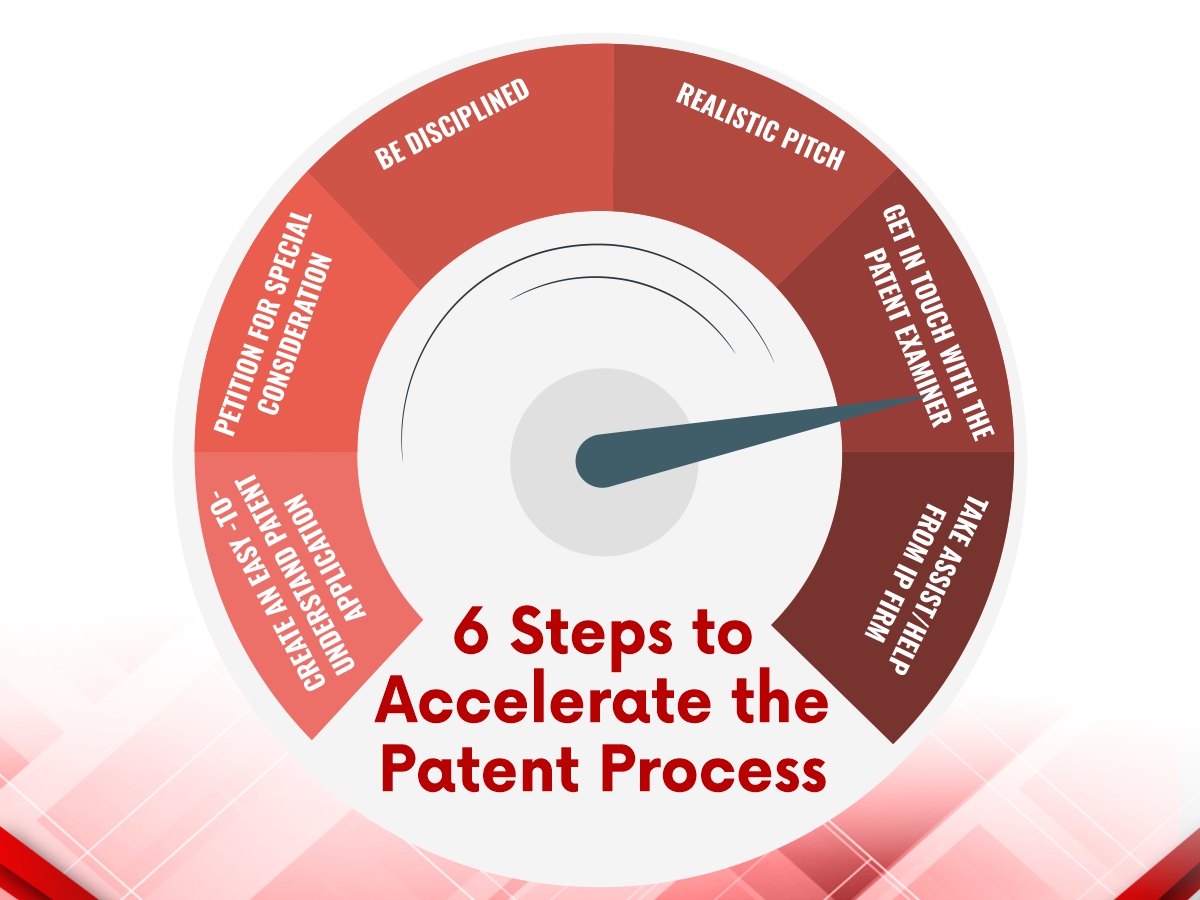
The patent examination procedure can be lengthy and time-consuming.
You have no control over the patent process, here are particular things you may do to expedite the process.
The easiest approach to decrease the likelihood of a patent approval delay is to be extremely thorough while drafting the application. Make sure you do a prior art search before submitting your patent application. Prior art searches are used to confirm that your invention/product is both novel and unique.
You will be able to find the patent and non-patent literature by doing a prior art search, which will aid you in defining the extent of protection in your claims. It may even speed up your prosecution by requiring fewer office actions and claim modifications.
Describe the innovation, how it works, what makes it a novel and so on, in detail while writing the patent application. If the innovation has a feature that distinguishes it from others, describe it in depth.
It is possible in some cases that your application be given special treatment in order to speed up the process. To make your petition unique, you must meet certain criteria. The following are the categories, and the patent applicant should fit into at least one of them:
Type of invention: You should file a patent application for an innovation that performs the following:
Age: You can ask your attorney to submit this petition if inventor’s age is 65 or older.
Health issue: You can ask for the patent approval procedure to be accelerated if one of the inventor’s health is “such that, if the application were to proceed normally, he or she might not be available to participate in patent and trademark office.
It’s all too easy to lose track of what’s going on around you. It might take years for the patent office to respond after you submit your application. Before filing your patent application, plan ahead by laying down a strategy to follow. You must know all of the examples and technical phrases, as well as how you intend to utilize them while negotiating your patent rights with the patent office.
The most essential thing is to be on time. Before you have to start paying fees, you have only six months to answer the patent office. Respond as quickly as possible and to the best of your ability. Late submission of the document increases the time to receive your patent—and you might end up paying lot of money in extension fees.
Remember to make your innovation sound original and to spell out any non-obvious aspects of your technology. This will make it much easier for your application to be approved quickly. Because there are so many patents to review, patent examiners are bound by time limitations. The patent office will be more likely to approve your claims if they are narrow.
Here’s a suggestion: Start with narrow claims so you can cover the essentials. It will assist in the patent being expedited. After that, you can file for continuations to ensure that your technology is covered for all future applications.
When it comes to patent applications, it’s best to speak with the patent examiner directly. Rather of exchanging emails, a face-to-face chat would clarify things faster than you might think. A video call or simply a phone call will be enough. You’ll also be able to avoid any misunderstandings with instant communication.
When speaking with a patent examiner, listen to their point of view to have a better understanding of their perspective on the innovation/invention. Patents are frequently technical, but examiners need to understand all of it in detail. A one-on-one interaction can assist them understand their problems, and it will be simple for you to describe the idea without using jargon.
Rather than attempting to do it yourself, it is always preferable to seek professional assistance. Talk to an expert Intellectual Property consultant to get the much-needed clarification. They will be able to assess your specific situation and recommend the best solution. Visit Wissen Research official website www.wissenresearch.com if you are interested in outsourcing IP project. We have more than 8 years of experience in IP Services specially in Patent.

IPR in the Music Industry: Safeguarding Innovation in the Digital Music Era

Innovation in Automobile Industry: Key Tech & IP Trends to Watch

Protecting Innovation in Fashion: Key IP Strategies Every Fashion Brand Should Implement

From Lab to Table: How Cultivated Meat is Revolutionizing the Industry?
© Copyright 2024 – Wissen Research All Rights Reserved.